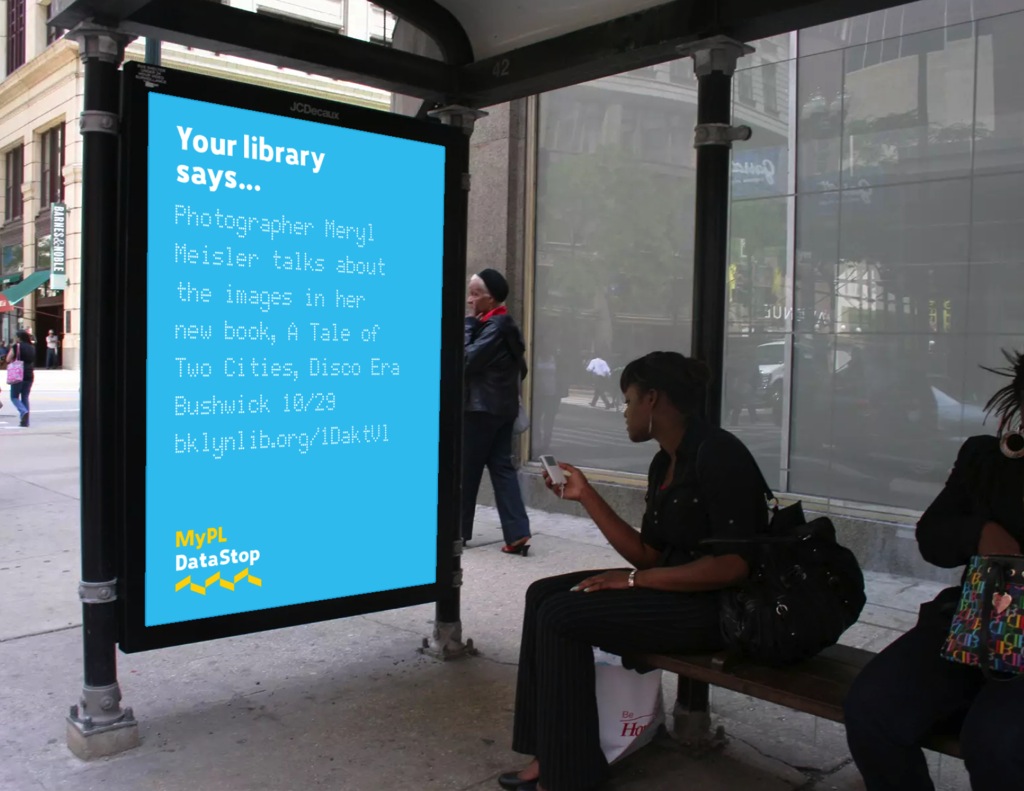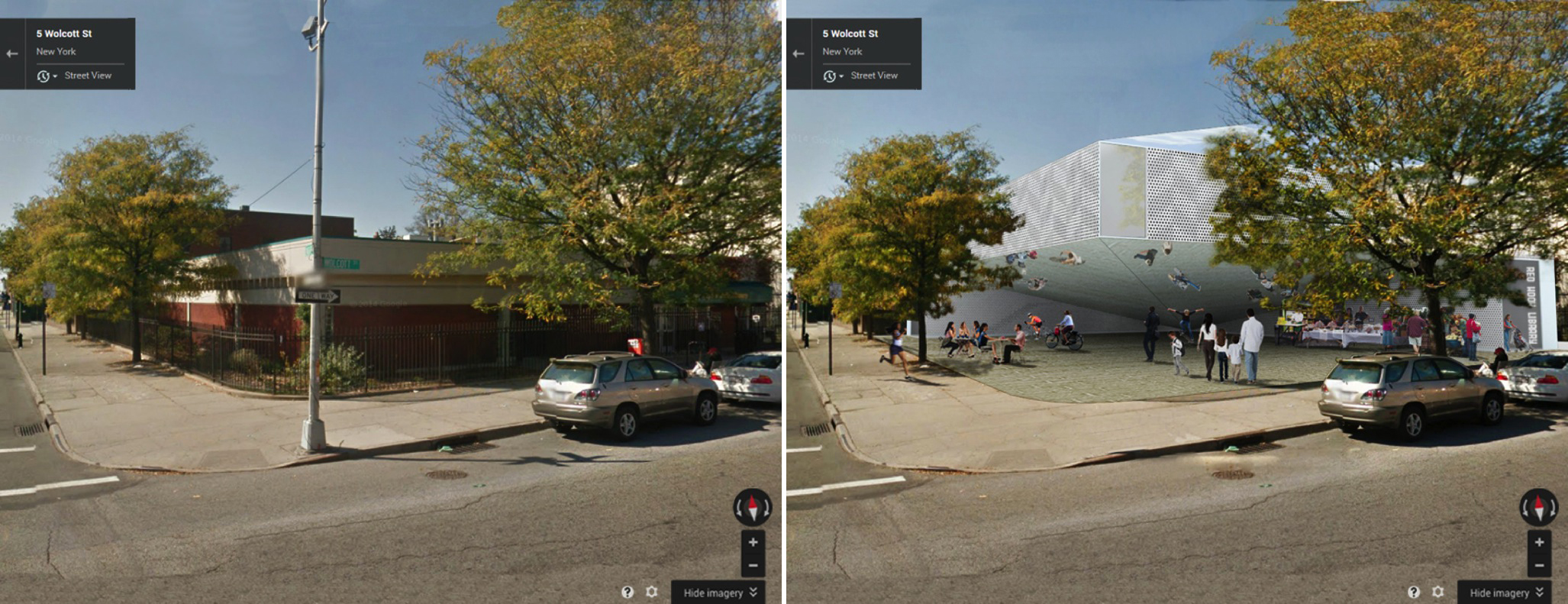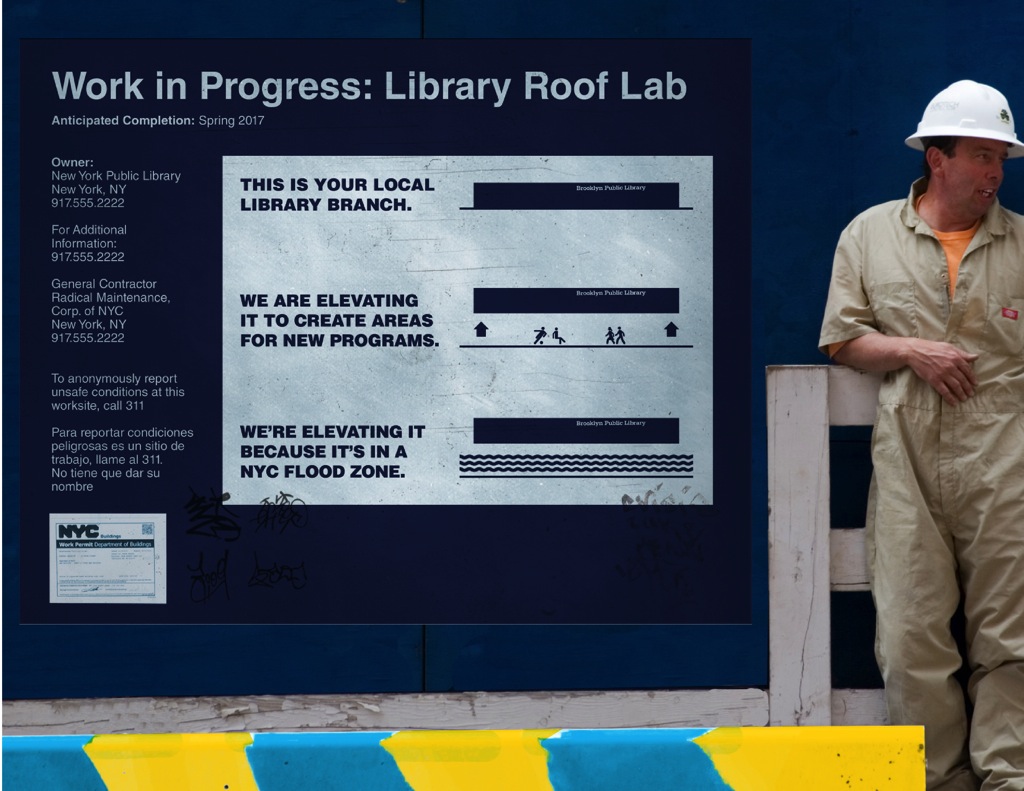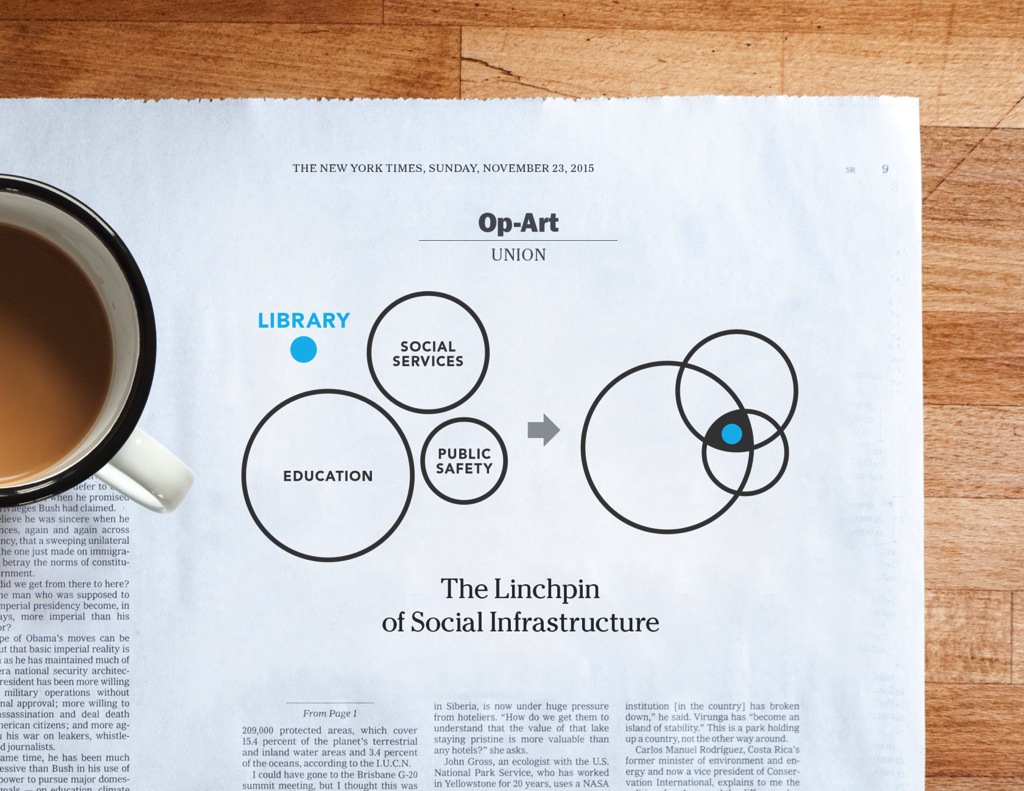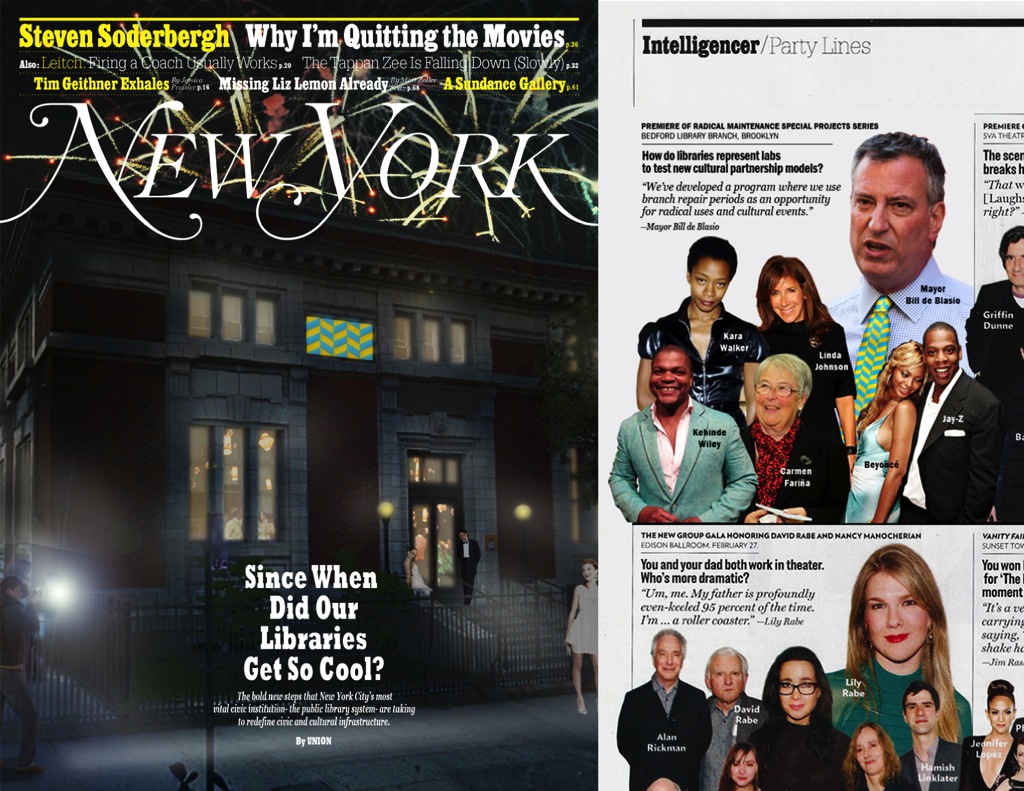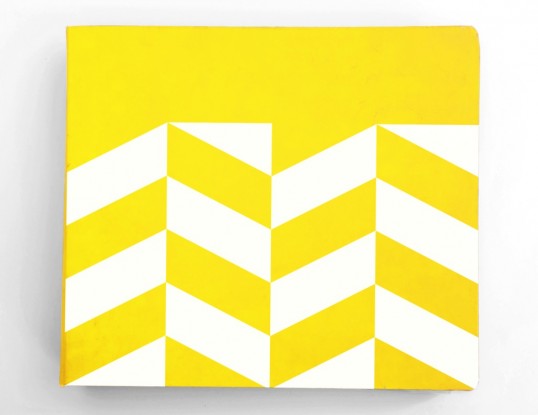Proposal | UNION
UNION
Annie Barrett, Sapna Advani, Bryan Boyer, Landon Brown, Scott Geiger, Helen Han, Jane Lea, Adriel Mesznik, Ryan Thacker, and Ann Baird Whiteside
UNION was one of five interdisciplinary design teams selected to participate in Re-Envisioning Branch Libraries, a design study organized by the League and the Center for an Urban Future in 2014. Read about their proposal below.
Libraries are undervalued as a linchpin of civic life and social infrastructure. That conviction is the launching point for interdisciplinary design team UNION’s proposal for enhancing branch libraries in New York City. Their solution begins with building public will to advocate for the value of libraries and commit to their future success. “How do you change the position and value of the libraries within the eyes of the city, the citizens, and potential stakeholders and partners to the library system?” asks team lead Annie Barrett.
The fiscal challenge of library funding — the city’s three library systems have over $1 billion in capital needs simply to bring all branches into a state of good repair — is recast as an investment in the future of New York City. The team posits that increased visibility and recognition can catalyze broader transformation by engaging everyday people, local institutions, and, eventually, policymakers through modest programs and actions. This portfolio of strategies is meant to build a broad-based constituency of advocates for the libraries, creating momentum that leverages private capital and public investment. UNION’s strategies reveal the important roles libraries have in civic life beyond information and education, including workforce development, health, disaster resiliency, and community identity.

A new identity system increases visibility and conveys circulation, mobility, and “librariness.”
To demonstrate how these proposed actions could engender dramatic change, UNION imagined a New York City in the near future in which “librariness” pervades everyday life. A branding and communication program unifies the city’s three library systems into MyPL and increases its visibility. The graphic identity is a colorful chevron motif resembling open books, which catches the eye and conveys movement or circulation. Bold new designs for the BookOps floating collections trucks and a Librarian at Large, stationed on public transit or in weekend greenmarkets, increase public awareness of and access to the system and its resources.

A reimagined library card could connect to other institutions and services across the city.

A Librarians at Large program would place librarians in public spaces to connect with people during off hours or outside of library walls.
This heightened visibility serves as a tool to spark curiosity and engage people in an active role in the libraries. New programs begin with small, low-cost actions: a Maintenance Mob event invites residents to volunteer for clean up and small repairs at their local library, while a hackathon leads to grassroots mobile apps and an improved interface for the system’s website. These strategies are to be tested and iterated, expecting that not all will be successful in all neighborhoods — “you try something else until you hit the right note,” explains Barrett.

Enhanced visibility and increased social capital would be used to attract partnerships with local institutions, such as an envisioned partnership with MoMA PS1 to relocate its annual Young Architects installation to a library roof. Beginning with tactics that have low barriers to entry is significant: “Those small-scale initiatives motivate personal investment by individuals. This, in turn, motivates institutions and organizations that have the means to move some of these things forward to initiate partnerships with the libraries.”

Branches are evaluated for inclusion in the Radical Maintenance program based on need.

A catalog of simple interventions fix invisible maintenance issues by using highly visible repair solutions.
The team then turns to the library buildings themselves and the significant work needed to bring them to a state of good repair. A proposed Radical Maintenance program couples required maintenance with bold architectural solutions — invisible issues fixed with highly visible repairs that transform the image and experience of the library. Focused initially on the “Lindsay Boxes,” the mostly brick, single-story branches built in the 1960s and ‘70s, repairs would be chosen from a catalogue of potential interventions. Renovations would be leveraged to enhance the library, rather than simply maintain: for instance, the scope of required roof repairs may be expanded to also bring light into the center of a dark library or provide new rooftop public space.
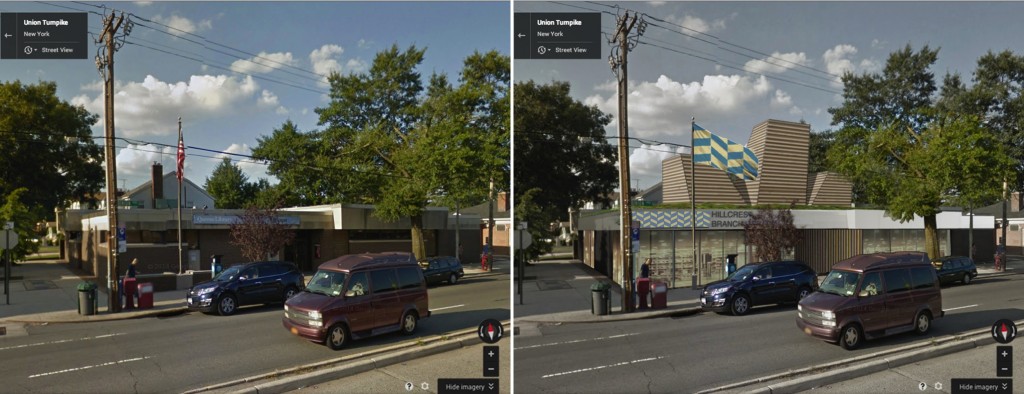
The Hillcrest, Queens branch, in need of a new roof and mechanical systems, can be transformed in use, organization, and design through Radical Maintenance.
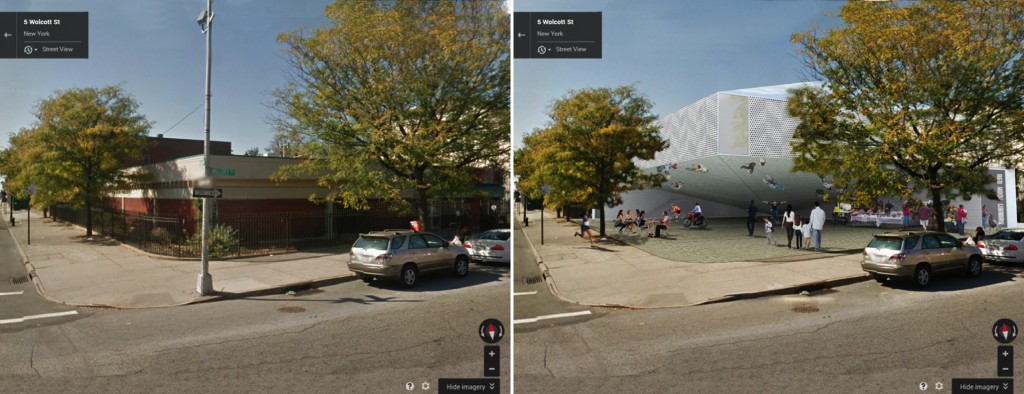
The Radical Maintenance program helps libraries get the most of expenditures currently used only to maintain the status quo.
UNION’s strategy unfolds so that the investments build upon each other: “Our story is about how design can be deployed to mobilize an escalating transformation of changes to physical infrastructure that are buoyed by and enabled by a transformation in how people think about the importance of libraries.” Within the portfolio, strategies are classified from “actionable” to “imaginable,” with the largest actions manifesting at the scale of the city. A proposed Civic Improvement District positions “libraries as part of transforming a neighborhood” within public policy.
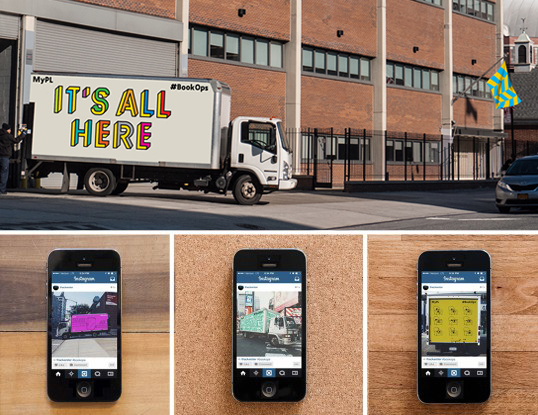
Redesigned BookOps trucks enhance visibility.
The ten-person UNION team includes architecture, design, planning, strategy, library science, technology, identity, and development professionals. Their proposal is explained through a visual story that fits comfortably into contemporary life: the new MyPL brand is seen on flags, t-shirts, and Mayor de Blasio’s tie; a library card becomes the entrée into other city services, including being swiped in place of today’s MetroCard; Instagram photos capture bold new BookOps floating collection trucks; architectural proposals for new libraries are shown via Google Maps Street View. This narrative quality, or scenario of a designed future, “brings the library into our daily routine.” Design is used as a mechanism for social and economic change.

If the public library system is to thrive, libraries must move from the margins of civic life to its center.
Ultimately, UNION repositions libraries within public policy priorities, “changing the outlook on what the return on investment [in libraries] is — something that strengthens all aspects of the city.” By mobilizing the city at large and enhancing the profile of libraries, the team envisions renewed investment from private and public sources with libraries as “a mascot for civic architecture and infrastructure.”
⋅⋅⋅
DOWNLOAD PDF
Download a PDF of the team’s presentation to see more on this proposal.
VIDEO PRESENTATION
Annie Barrett presented this proposal at a symposium co-hosted by the League and the Center for an Urban Future on December 4, 2014:





